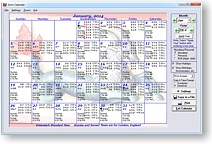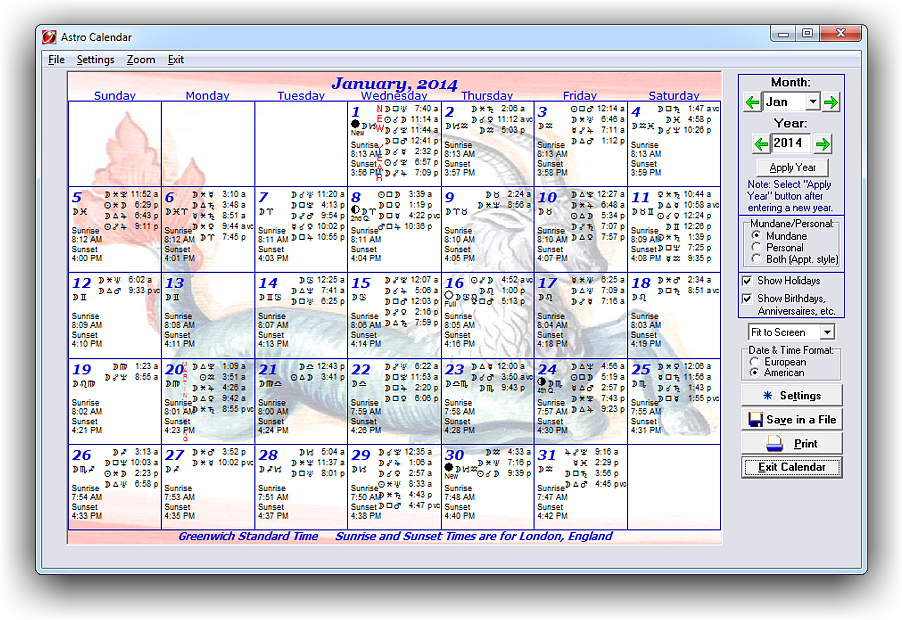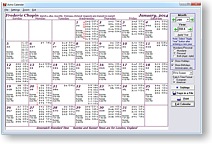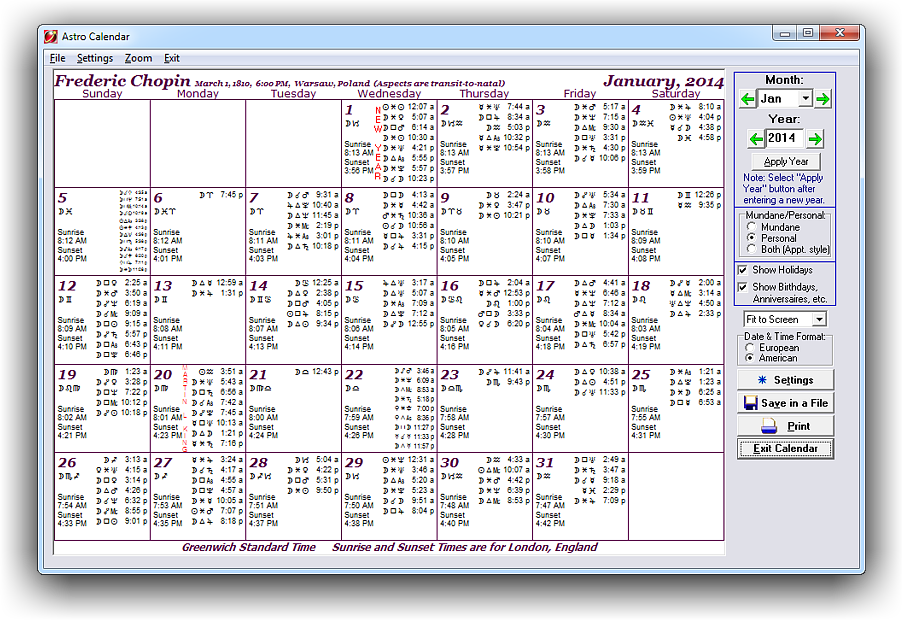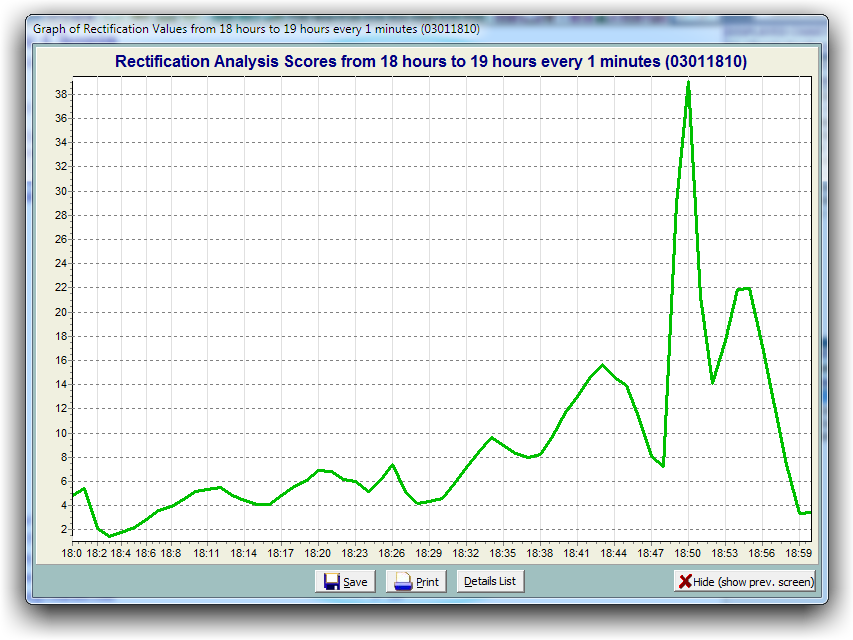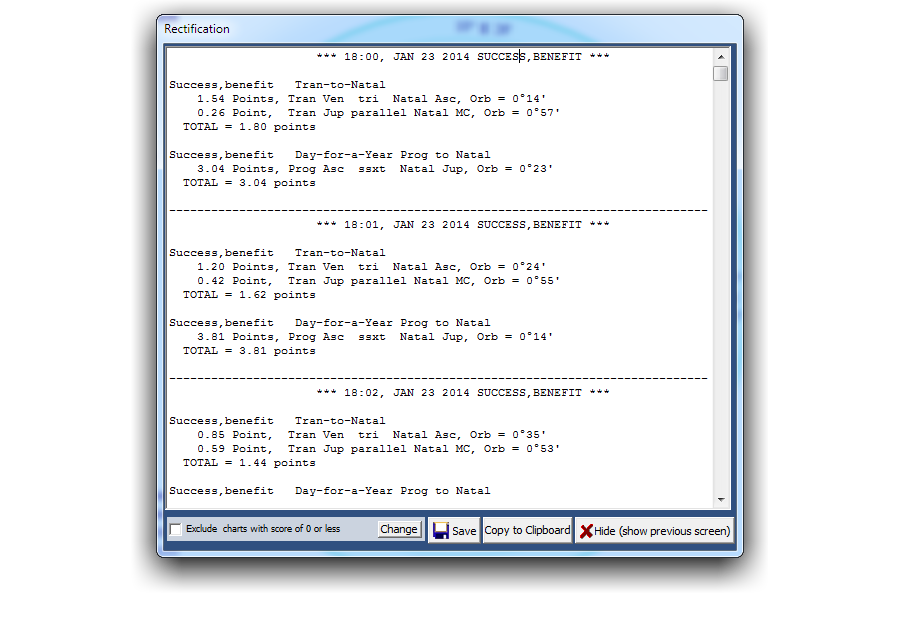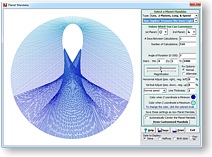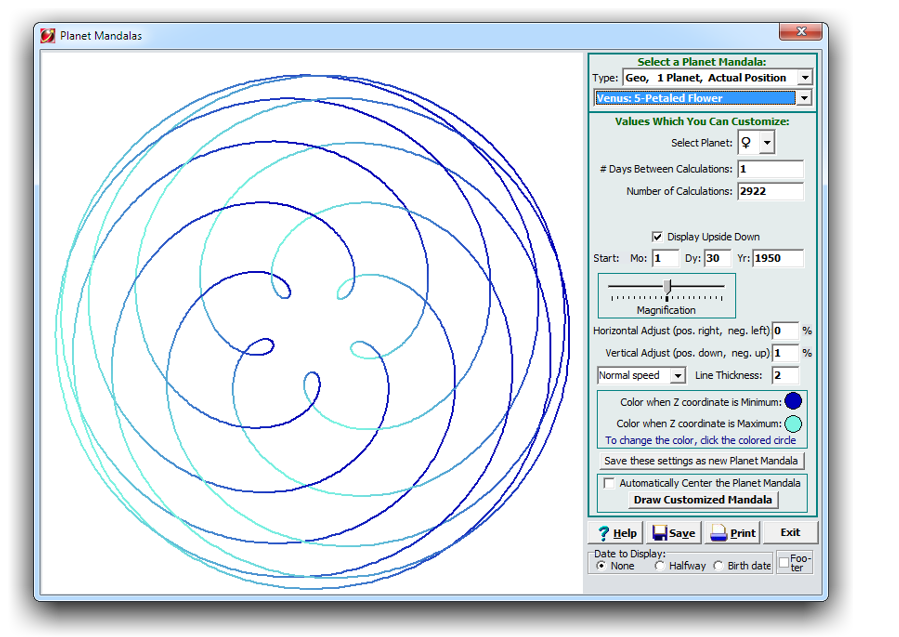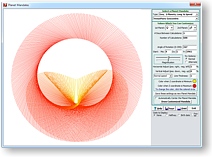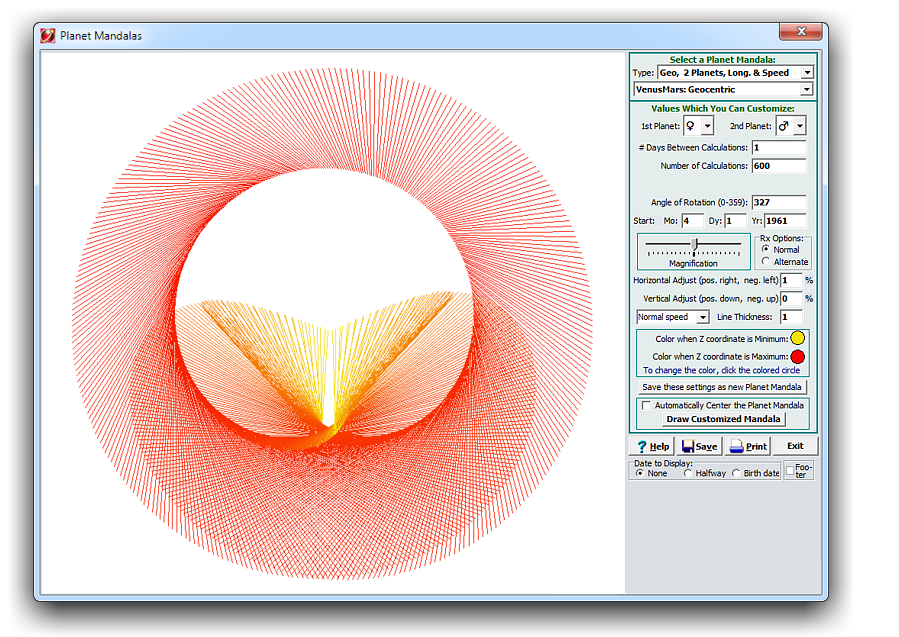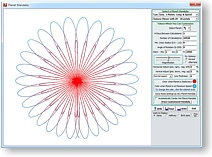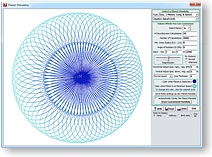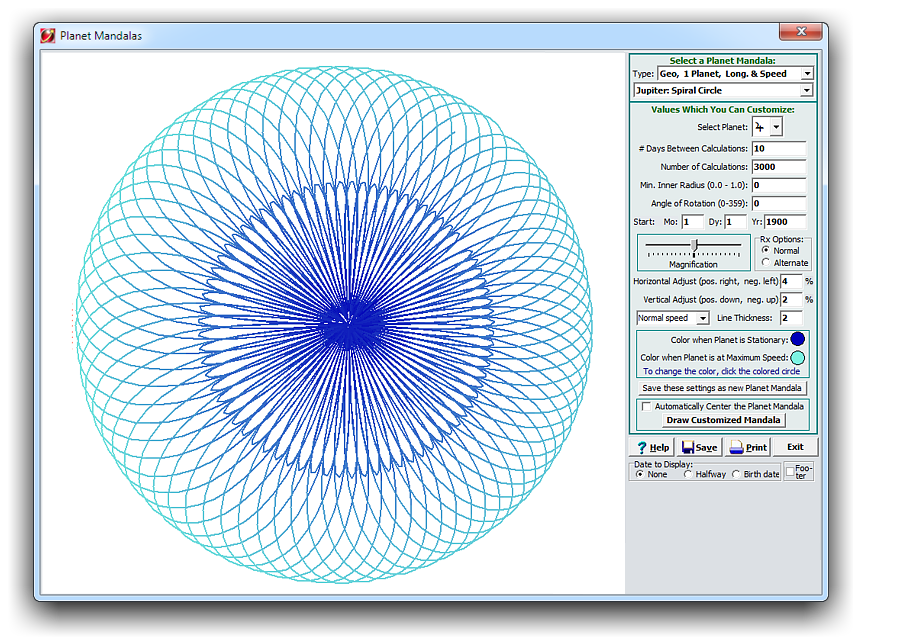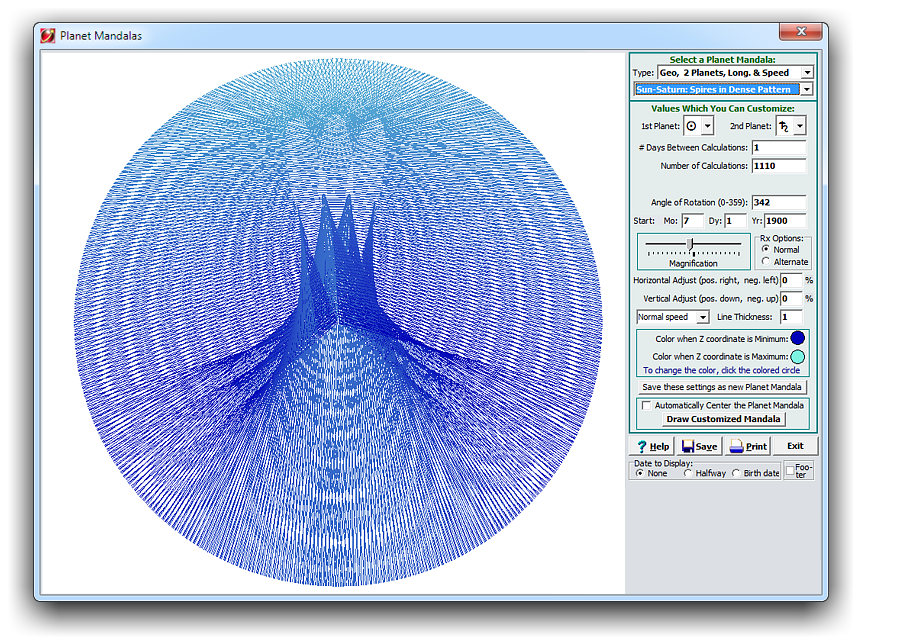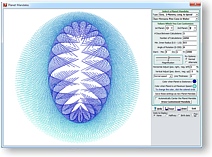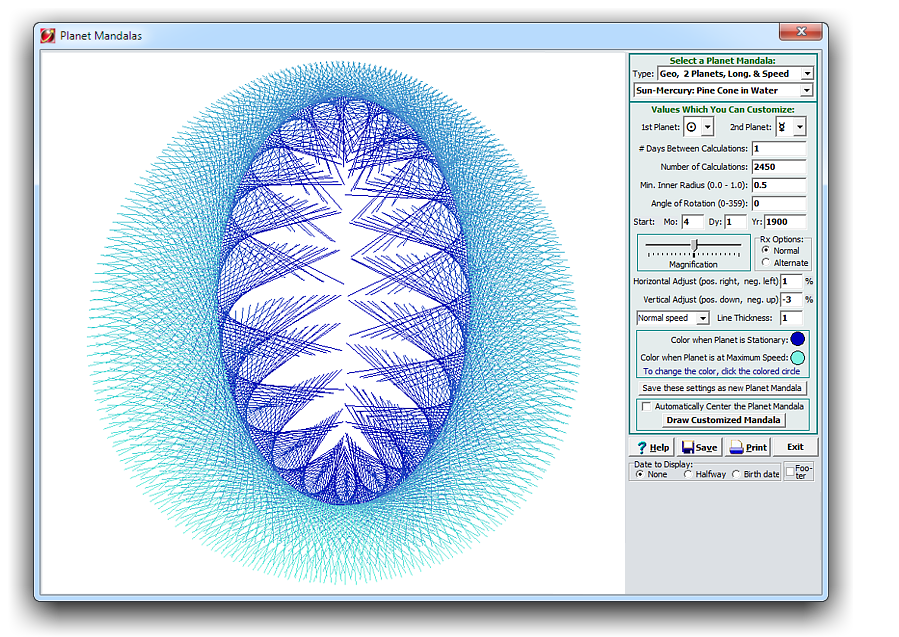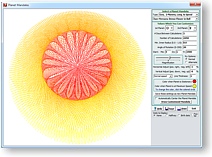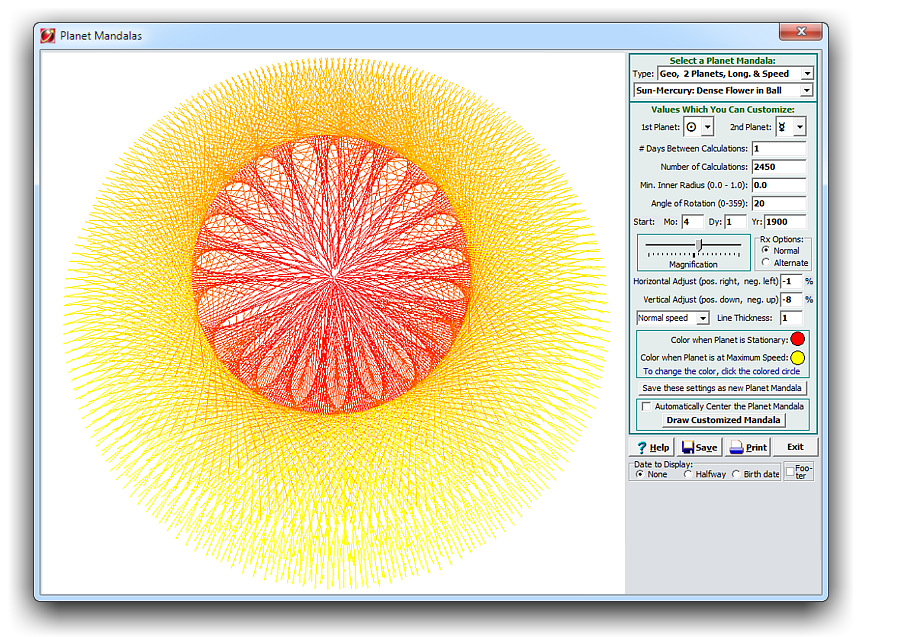 Windows 10 / 11 compatible!
Windows 10 / 11 compatible!
|
Some other forecasting features in Sirius are Interpretations, the AstroCalendar, the Financial Astrology Toolbox, Rectification, and Planet Mandalas. These are described below.
Forecast Interpretations
For PDF Samples click on the language name.
- English
- Spanish
- French
- Italian
- Norwegian
Sirius provides the Cosmo Forecast Report. This report provides brief interpretations of transit-to-natal aspects. The interpretations are clear, direct, and have received rave reviews for being well-written and accurate. The interpretations are available in 5 languages: English, Spanish, French, Italian, and Norwegian! The English and Italian reports interpret transiting Sun, Mercury, Venus, Mars, Jupiter, Saturn, Uranus, Neptune, and Pluto in major aspect to the natal planets, Asc, and MC. The Spanish, French, and Norwegian versions provide interpretations of only transiting Sun, Mercury, Venus, and Mars. A no birth time version of the reports does not include the natal Asc and MC in the interpretations. There are two other forecast interpretations. A Vedic dasas interpretation and a progressed lunar phase interpretation. In the Vedic dasas report, most, but not all dasa periods are interpreted. The progressed lunar phase report is a very short report that describes what the lunar phases are, and a paragraph interpretation of the lunar phase at birth and the current lunar phase are given.
AstroCalendar
The AstroCalendar is Sirius, like printed astrological calendars that can be purchased from publishers of astrological calendars, but it goes a big step further: you can produce a calendar for a specific person. The AstroCalendar that can be used by anyone is based on transit-to-transit aspects (the aspects that occur in the sky on any given day) and is referred to as the Mundane AstroCalendar in Sirius. You can also produce a Personal AstroCalendar which gives the aspects of transiting planets to the planet positions in someone's chart instead of the transits in the sky. You can also include both the Mundane and Personal transits in one calendar. There are two different sets of backgrounds and you can also add your own sets, and you can change the fonts. Holidays can be shown, you can add birthdays anniversary dates, etc., and you can choose whether to include various options, like Moon phase and Moon entering zodiac signs. You can also choose the aspects desired. In short, the AstroCalendar is beautiful and provides a large number of features.
Financial Astrology Toolbox
The Financial Analysis Toolbox provides two important features:
Rather than pick peak or trough days, you may have an astrological theory that particular aspects between planets cause prices to go up dramatically or go down dramatically. This is different from predicting when a price reaches a high or low, and in Sirius you can select dates when prices go up or down by a relatively large percent if you prefer this approach to predicting prices. Sirius allows you to approach your analysis either way. After picking these dates, you can use the research features in Sirius to see what aspects between planets or other astrological influences occur in these charts, and then build an AstroSignature and test it to see how well it works. As you can see, there are several steps involved in carrying out financial research and fortunately we have two videos that demonstrate the procedure. The first video explains how data is imported and peak dates are selected and the second video shows how an AstroSignature is created and tested.
Rectification
Rectification is the process of determining when a person was likely to have been born. A common way to rectify charts is to obtain a list of important dates from the person and then adjust the chart to see when the person would most likely have been born in order for the events to have occurred on those dates. For example, suppose that the time of birth according to the birth certificate is 4:10 PM but if the person was born at 4:12 PM, then progressed Asc would have been opposition the 7th house cusp when the person got married. Astrologers would suspect that the person was actually born at 4:12 PM. The time that was recorded or given by the mother or people who were present at the birth may be inaccurate for several reasons: the exact time of birth may not be very important to the people attending the birth or the intensity and importance of the birth overshadowed any concerns about the exact time of birth. Rectifying a birth chart is tedious and some astrologers spend many hours trying to rectify a chart. With intensive and careful computer programming we have developed the automatic rectification feature in Sirius. Transits and progressions are analyzed for different possible birth times and compared to the aspects that predict the different events in a person's life, and from all of this information, a graph is produced which shows the most most likely times that the person was born. You can customize the AstroSignature (combination of astrological influences) for each event (marriage, death, child born, accident, etc.) and you can create new events. You can set how much weight to put on each aspect so the aspects that are most important for predicting an event can be given greater weight. When you produce the rectification graph, you can select just transits, or just secondary progressions, or solar arc directions, or a combination of these and you can include tertiary and minor progressions, direct or converse. The flexibility, power, and simplicity of the rectification feature is wonderful. After we released the version of Sirius that had this feature, we received several reports from customers that the rectification confirmed the rectification of their own charts which they had gradually been able to do over years. They were stunned and delighted to see the same time was picked by just entering the dates and running the rectification. An example of a rectification graph and the rectification details that are provided with the graph are shown in the images on the right side, as well as a video that explains how to select and use the rectification feature in Sirius.
Planet Mandalas
Planet mandalas are beautiful images created from the motions of planets. Sirius provides a large selection of planet mandalas and some unique features that are not available in any other program. Planet mandalas are not used by many astrologers at this time. Perhaps at some future time we will better understand how they can be used astrologically. They are mysterious and awe-inspiring patterns created by the motions of planets. The two videos provide more information about planet mandalas. Planetary Mandalas reveal that the simple elliptical paths of planets form beautiful and fascinating shapes. Sirius provides innovative features to its Planet Mandalas, and these new features show an extraordinary elegance and beauty that has not been fully seen before. WHAT IS A PLANET MANDALA? Longitude-Speed Planet Mandalas of either 1 or 2 planets Actual Position Planet Mandalas are the Planet Mandalas originally developed by Neil Michelsen and Mark Pottenger. Longitude-Speed Planet Mandalas are introduced in Sirius. Given below is a description of these types of Planet Mandalas and the various settings that affect the appearance of a Planet Mandala. Actual Position of Planet Mandalas will be describe first because Longitude-Speed Planet Mandalas can, in a sense, be regarded as an extension of the concept of Actual Position Planet Mandalas. |
